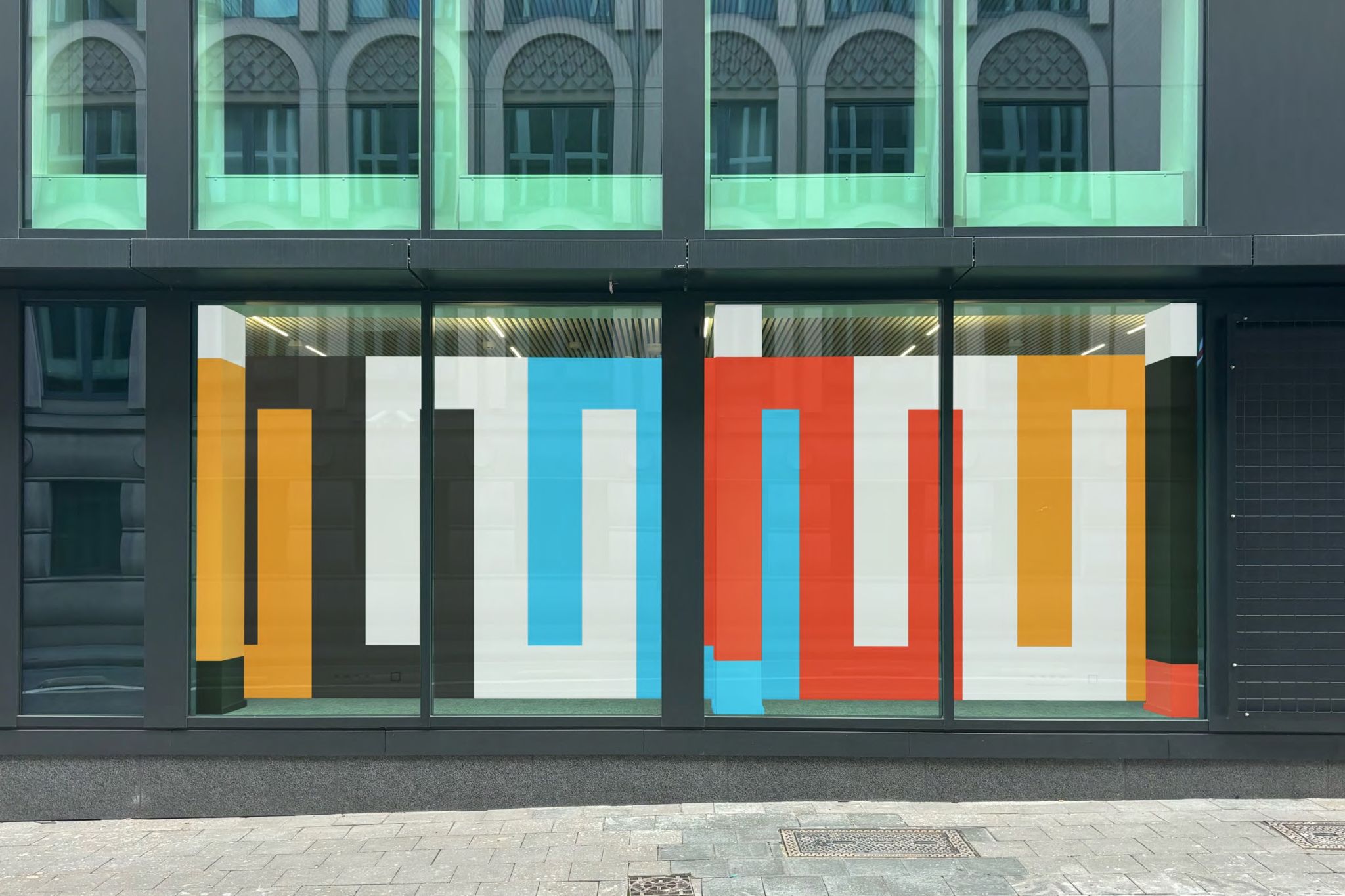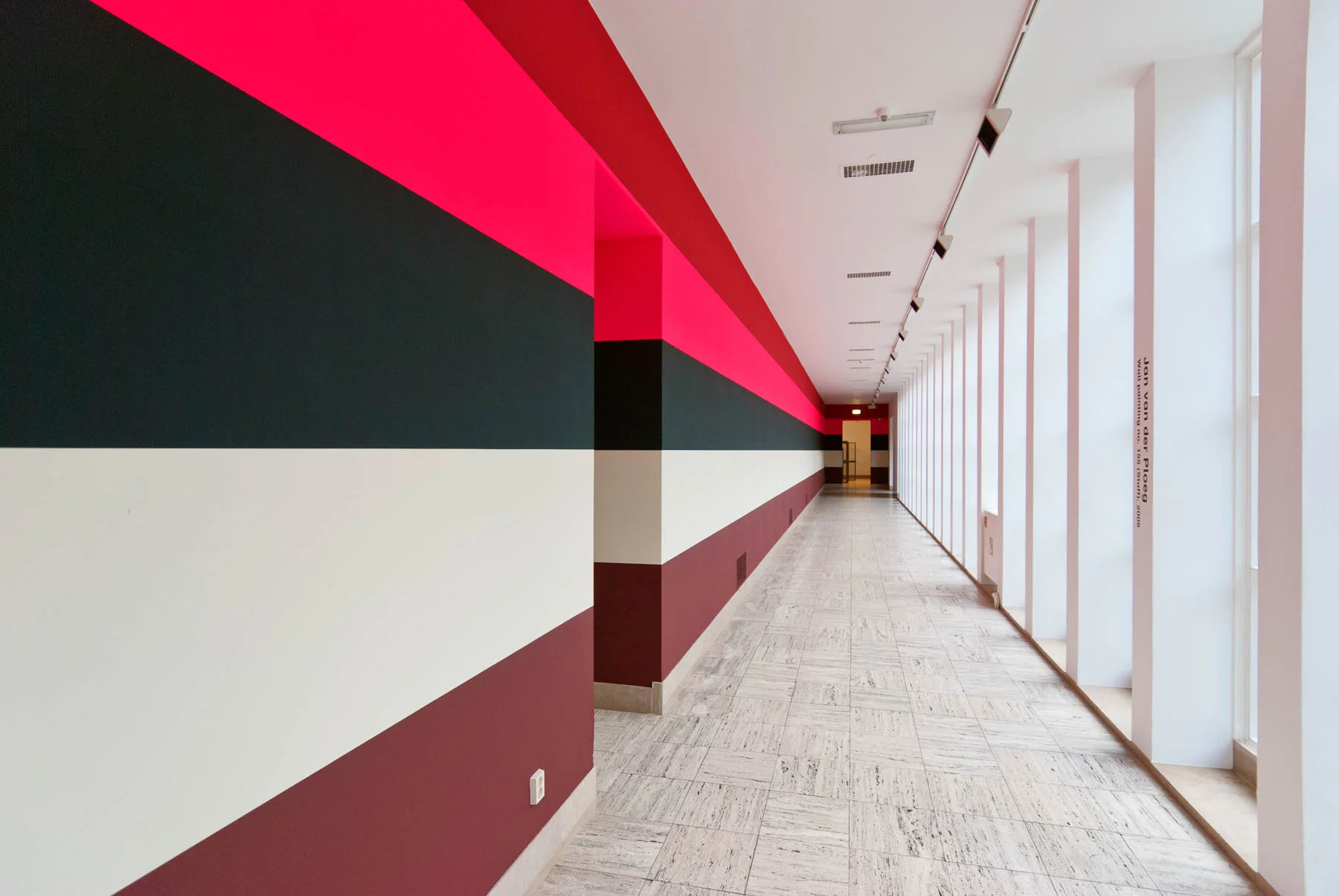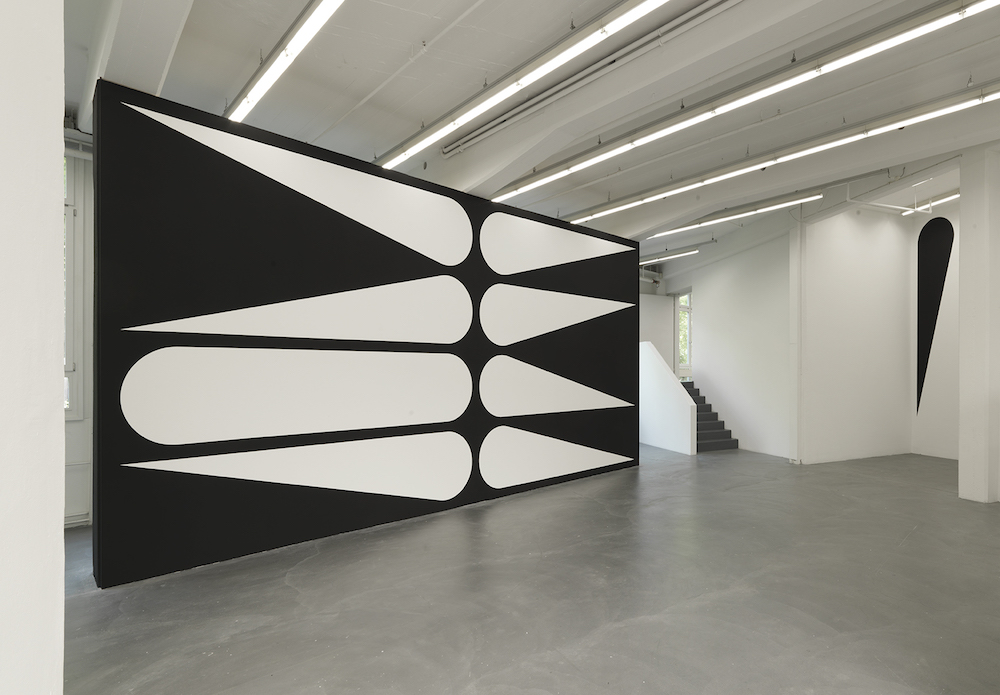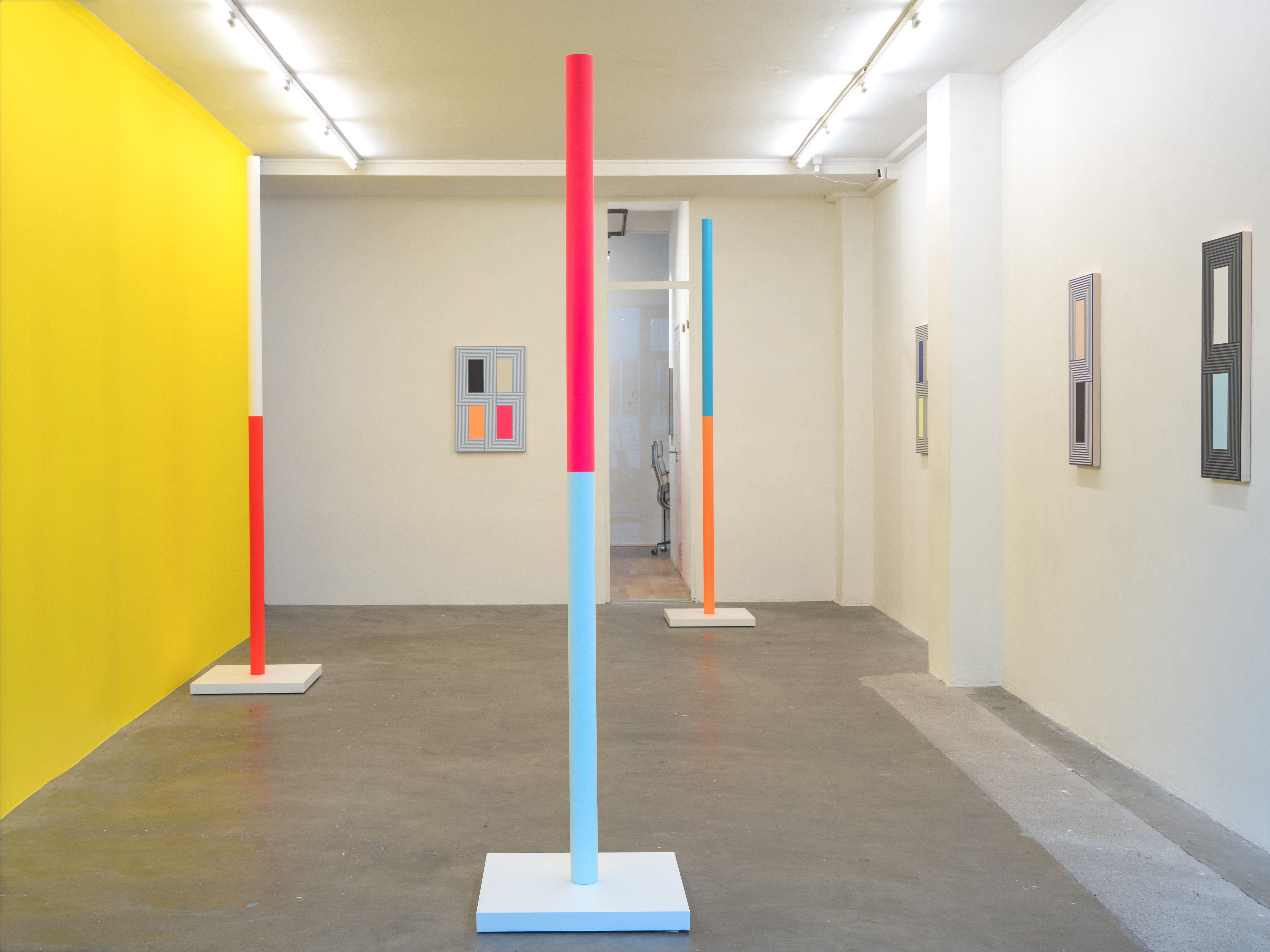Jan van der Ploeg (Amsterdam, 1959) lives and works in Amsterdam. His practice is defined by a bold, graphic visual language in which repetition, shape, and color converge to transform both canvas and architectural space.
Since the late 1990s, Van der Ploeg has worked with a repertoire of geometric forms, most notably his recurring motif “Grip,” a rectangular shape with rounded corners that functions as both anchor and variation within his oeuvre. Through the careful interplay of strict compositional rules and a vibrant, layered use of color, his works generate optical rhythms that are at once minimal and playful. While grounded in the traditions of abstraction and concrete art, his approach also draws from the immediacy of graphic design and popular culture.
Wall paintings are a central element of Van der Ploeg’s practice. Expanding beyond the canvas, his interventions reshape entire spaces, entering into dialogue with architecture and altering how viewers experience their surroundings. These monumental works, realized in museums, galleries, and public contexts worldwide, demonstrate his ongoing interest in how painting can operate both as an autonomous image and as a spatial environment.
Van der Ploeg studied at the Gerrit Rietveld Academie in Amsterdam and at Croydon College of Art in London, before joining the Rijksakademie van Beeldende Kunsten in Amsterdam as a resident. In 1990, he was awarded the Koninklijke Prijs voor Moderne Schilderkunst. Alongside his individual practice, he is also cofounder of PS Projectspace, an artist-run initiative in Amsterdam dedicated to experimental exhibitions.
His work has been presented internationally in solo and group exhibitions, including at Museum Boijmans Van Beuningen, SCHUNCK Heerlen, MOTI Museum Breda, and Gemeentemuseum Den Haag, as well as at Taubert Contemporary in Berlin, Galerie St. Hilaire in Fribourg, and Sarah Cottier Gallery in Sydney. Van der Ploeg’s paintings and wall works are represented in numerous public and private collections worldwide, and his extensive body of wall paintings has established him as one of the most distinctive voices in contemporary abstract painting.


























